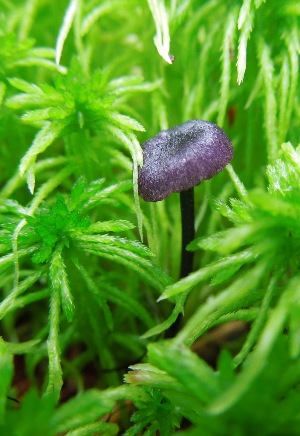In the opinion of the layman, the scientists of the XXI century know everything about the nature. So, it would seem that many mushroom hunters in our woods know every inch of the forest. But, it turns out that this is not so.
Leading engineer of the Department of Mycology and Algology of the biological faculty of MSU Lomonosov Maxim Dyakov, who was part of an international group of scientists-mycologists in 2015 found the same fungus, told the readers of “E-Vesti” about some features of the findings in the village of Krutitsy Tver region.
The main surprise was unknowing of our ancestors about mushroom types: “you see, our grandparents know certain types of mushrooms which are of interest from the point of view of use. In fact, in the middle lane of Russia there are about 10’000 species of basidiomycetes. Every year opens more, because this group is poorly known. We have such discoveries regularly, just now it has hit the Internet, there are a lot of surprises for a scientist. – If earlier the mushrooms were divided into those that you can eat or cannot eat, but now the situation has changed. Each species has a unique metabolism, it contains unique substances. As one example, Strobilurus, a fungus that grows in the early spring on buried cones. This is a small leathery mushroom. 10 years ago a compound called strobilurin was extracted from it, and now the manufacture of agricultural fungicides is based on derivatives of this compound. Therefore it is very important to know everything around us.”
Trip to explore the mushrooms of the region was organized by Department of Mycology, Moscow state University jointly with the laboratory of systematics and geography of fungi, Botanical Institute V. L. Komarov (BIN) of the Russian Academy of Sciences. During the trip, scientists found and learned many new things, including the new species of mushroom. “I went and saw the little fungus, – says Maxim – of course, I found out that it belongs to the family of Entoloma. And next to me was Olga Morozova of the BIN, which is one of four experts in the world on this genus. When I showed her the mushroom (she screamed, even elk with maturation rounded up), because she has immediately determined that this is either the second finding in the country or a new species”.
Mushroom of family Entoloma is called Entoloma krutiсianum. How describes the fungus M. Dyakov: “It is tiny mushroom with a height of 2 cm, thin, small, delicate… It grows under the canopy of swamp moss. Nobody tried to eat becuse it is no necessary, from the point of view of food it is of no interest.” The mushroom lives in the woods, curl up in small groups. “Naturally, we found more of these mushrooms, herbarized it and then, in BIN, O. V. Morozova looked it microscopy, molecular characteristics and showed that this is indeed a new kind for science.” Data novice was sent to the international genetic repository GenBank (GenBank), and a Genetic Institute. “Now we’re preparing herbarium sample to send in the 20 largest fungal herbarium in the world. This finding slightly expands the horizons of knowledge”, – summed up M. Dyakov.
To date, according to M. Dyakov, Russia has a lot of centers of mycology: the mentioned BIN and the Department of Mycology at Moscow state University, Institute of Phytopathology, vniif, institute at Golitsyno… There are a powerful group of scientists in Penza, Perm, Petrozavodsk… So we will have a lot of mushroom discoveries.




